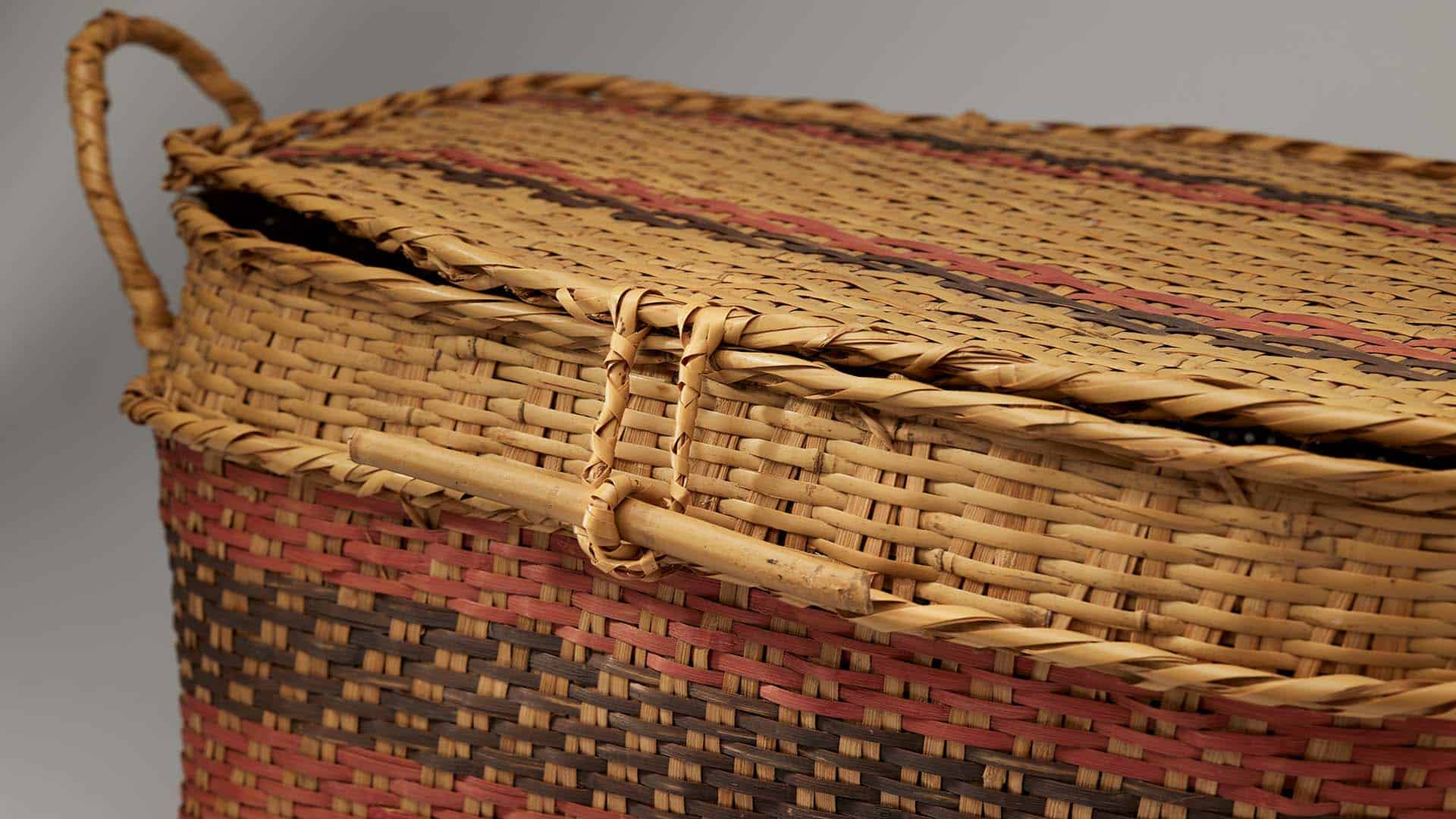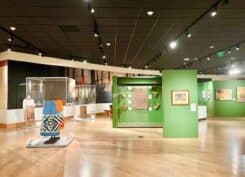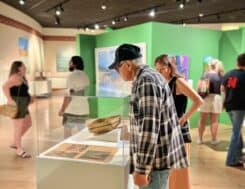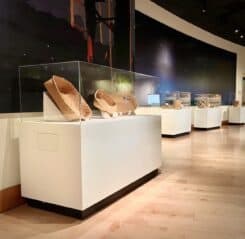Bok Abaiya – Practiced Hands and the Arts of Choctaw Basketry
This temporary exhibit opened on July 22, 2023, and closed on March 30, 2024. Here, the work of generations of Choctaw basket weavers is displayed alongside contemporary Choctaw art. Come view the exhibit to learn more about the importance of rivercane to Choctaw basket weavers and how modern Choctaw artists are incorporating ancestral basket patterns within their work.
For generations of Choctaw basket makers of the past and present, the basket-making process often begins amid rivercane stands situated near the water. In Chahta anumpa, or the Choctaw language, bok abaiya roughly translates to “alongside the river.” This harkens to the origins of Choctaw basketry and acknowledges the evolution of this practice. From sifter and fanner baskets used in 1880s Indian Territory to modern commercial reed baskets made in 2023, crafting a Choctaw basket requires practiced hands. The complex patterns and different styles of Choctaw baskets of the past continue to influence contemporary Choctaw weavers and artists today. Many contemporary Choctaw artists draw upon traditional basket patterns to create contemporary art in various forms. We acknowledge the work of our Chahta ancestors before us, celebrate the contributions of our contemporary basket makers and weavers, and applaud the creations of our modern artists.
Here, the work of generations of Choctaw basket weavers is powerfully displayed alongside contemporary Choctaw art. In this space, visitors can view four generations of one family of Choctaw basket makers’ work – the first time we have been able to do this. This exhibit could not have been created without our community. It depended on their trust. Basketry is not a practice of the past; it has been a functional aspect of everyday life in our communities for thousands of years. While we see it displayed in museums across the United States and abroad today, people still use it as part of their daily life. With this exhibit at the Choctaw Cultural Center, we ground this practice once again in community and seek to inspire the next generation of Choctaw basket weavers.
The night before the exhibition was opened to the public, Choctaw Cultural Center hosted a private viewing. The contributors, artists, weavers and the families of the basket makers were invited to view the exhibit before it opened to the public.
One of the exhibition’s highlights were Choctaw baskets on loan from the Philbrook Museum of Art in Tulsa.
Typically, these baskets are only loaned for a short time. However, the Philbrook Museum of Art has allowed them to stay at the Choctaw Cultural Center for the duration of the Bok Abaiya exhibition.
Donated by Carolyn Bradshaw, a tribal member from McAlester, Oklahoma, this large picnic basket is a rare piece of Choctaw rivercane basketry made in the 1970s by Laura Willie and her sister-in-law, Wilsie Willie of Wright City, Oklahoma. The makers used a small piece of rivercane to keep the lid closed. Today, it is rare to find rivercane baskets of this size due to a lack of accessible cane stands. As there become fewer and fewer cane stands, it will become increasingly difficult for Native weavers to find the materials needed to create these incredible rivercane masterpieces.

Visit the Cultural center Today
ADDITIONAL RESOURCES
- Community Collaboration and the Making of the “Bok Abaiya: Practiced Hands and the Arts of Choctaw Basketry” Exhibit, Iti Fabvssa, July 5, 2023
- Bok Abiya temporary exhibit highlights work of generations of Choctaw basket weavers, Christian Toews, September 1, 2023




